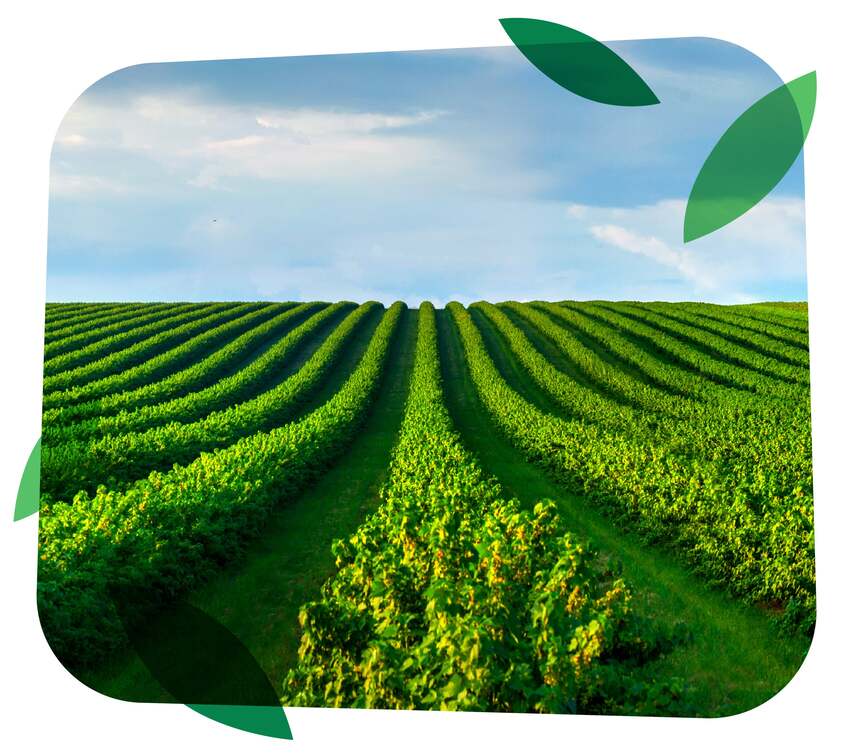Abstract
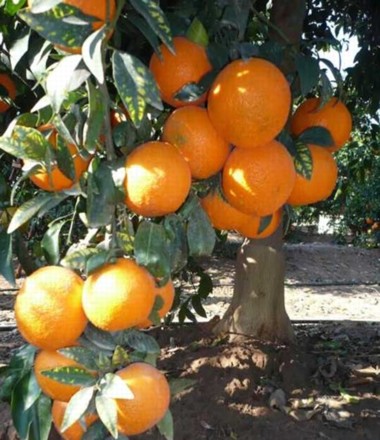
Introduction
The accepted fertilizer treatment today is fertigation, with the fertilizer equations where the source of potassium is potassium chloride (potash - KCI) due its inexpensive cost as compared to other potassium sources. Between 2008 and 2013 an experiment was carried out which examined the influence of alternative fertilization programs for the OR easy peelers.
The OR orchard was planted in August 2007 in Kibbutz Naan, Israel, on bitter orange (Citrus aurantium) mounts. The soil in the plot is sandy red loam, and the planting spacing is 5.5 X 3.75 meters (485 trees per Ha). The plot was irrigated during the experiment with waste water. Farmer's practice fertilization program was administered to the entire plot, and not just to the area where the experiment took place.
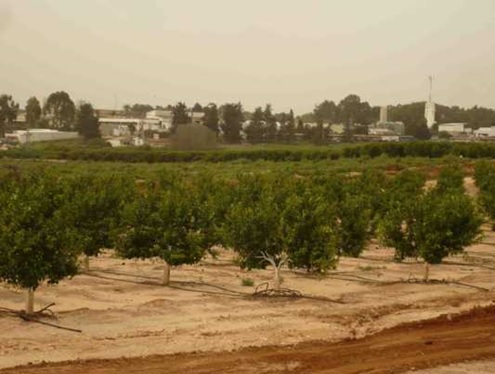
The Experiment's Treatments:
- Farmer's practice - fertigation with fertilizer containing potassium chloride (KCI).
- Fertigation with Poly-Feed™ - soluble fertilizer that contains potassium from a potassium nitrate source (KNO3).
- Controlled released fertilizer (Multicote™ Agri) with fertilizer levels of 50% and 70% compared to farmer's practice fertilization program.
Farmer's practice fertilizer is determined every year by the grower, and then the specific fertilizer levels in the various treatments are derived.
The experiment was carried out in four completely random repetitions. In each repetition were five trees, where two of them in the middle of the repetition were chosen for the various measurements.
The experiment measured the diameter of the graft and mount approximately 10 cm above and below the connection point, yield (weight per tree and size distribution) and the nutrient levels in leaves.
The first picking was carried out on February 2nd, 2011, the second on January 23rd, 2012, and the third on February 13th, 2013. The examination of leaves was performed on November 17th, 2011 and on November 12th, 2012.
Results
Between 2009 and 2010 no difference was found between the treatments concerning the diameters of the grafts and mounts, except for a significant difference in the diameter of the mount that received 70% Multicote™ Agri treatment, as compared to the farmer's practice treatments of autumn of 2009.
Leaf Examination
In the 2013 spring season new leaf element levels recommendations were released, and in light of these levels the results from the leaf examinations were analyzed. In the measurement of 2011 no significant differences were found between the treatments. It needs to be noted that the levels of nitrogen were quite high, between 2.6% - 2.95%, while the recommended level is between 2.23% - 2.47%. The levels of potassium were high in all of the treatments, between 0.66% and 0.78%, as compared to recommended levels of 0.52% - 0.57%.
In 2012 the nitrogen level decreased into the acceptable range, and no correlation was found between the nitrogen levels in leaves to the level of the nitrate fertilizer.
| Year | Treatment | N% | P% | K% | Mg% |
|---|---|---|---|---|---|
| 2011 | Farmer's practice | 2.91 | 0.13 | 0.78 | 0.23 |
| Poly-Feed™ | 2.62 | 0.14 | 0.65 | 0.24 | |
| Multicote™ Agri 50% | 2.85 | 0.14 | 0.72 | 0.23 | |
| Multicote™ Agri 70% | 2.71 | 0.14 | 0.66 | 0.23 | |
| 2012 | Farmer's practice | 2.42 | 0.15 | 0.69 | 0.16 |
| Poly-Feed™ | 2.34 | 0.18 | 0.69 | 0.17 | |
| Multicote™ Agri 50% | 2.38 | 0.13 | 0.64 | 0.16 | |
| Multicote™ Agri 70% | 2.46 | 0.14 | 0.65 | 0.16 |
Yield
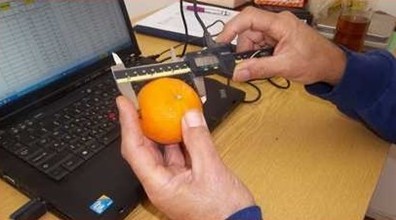
In the growing season of 2011 (picked in 2012) a significant difference was found between the farmer's practice and the rest of the treatments in all of the aforementioned measurements. The farm yield was approximately 6 tons lower per Ha than the rest of the treatments, the weight of the fruit was significantly lower than the control group when compared to the Multicote™ Agri treatments.
In the 2012 growing season (picked in 2013) Multicote™ Agri treatments yielded more fruit per tree in comparison with the farmer's practice and Poly-Feed™ treatments. The diameter and weight of the fruit were significantly smaller in the farmer's practice treatments as opposed to the other treatments (Graph No. 2).
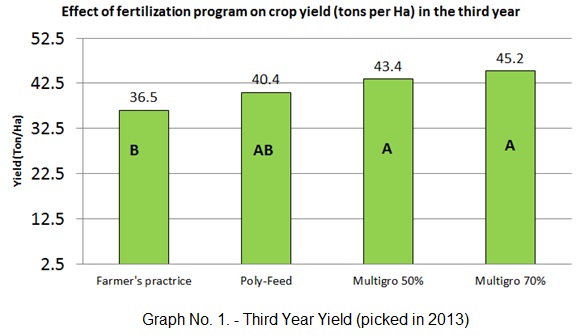
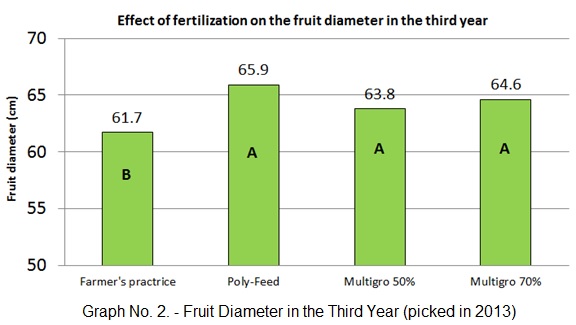
| Season | The Treatments | Avg. Number of Fruit of the Tree | Avg. Fruit Diameter (mm) | Avg. Fruit Weight (gr) | Yield (kg/tree) | Yield (ton per Ha) |
|---|---|---|---|---|---|---|
| 2010 | Farmer's practice | 110 a | 67 a | 161 a | 17.6 | 11.7 a |
| Poly-Feed™ | 98 a | 69.5 a | 179 a | 17.5 | 11.7 a | |
| Multicote™ Agri 50% | 113 a | 71.6 a | 189 a | 21.4 | 17.8 a | |
| Multicote™ Agri 70% | 99 a | 73 a | 198 a | 19.6 | 13.1 a | |
| 2011 | Farmer's practice | 787 b | 62 b | 114 b | 89.5 | 43.4 b |
| Poly-Feed™ | 803 b | 68.1 a | 130 ab | 104 | 50.7 a | |
| Multicote™ Agri 50% | 647 a | 66 a | 154 a | 99.7 | 48.4 a | |
| Multicote™ Agri 70% | 682 a | 68 a | 144 a | 97.9 | 47.5 a | |
| 2012 | Farmer's practice | 654 ab | 61.7 b | 115 b | 75.3 | 36.5 b |
| Poly-Feed™ | 615 b | 65.9 a | 136 a | 83.3 | 40.4 ab | |
| Multicote™ Agri 50% | 705 a | 63.8 a | 127 a | 89.6 | 43.4 a | |
| Multicote™ Agri 70% | 715 a | 64.6 a | 130 a | 93.3 | 45.2 a |
Discussion
In the years 2008-2010 there was no noticeable difference between the treatments concerning the mount or the graft, except for a significant difference in the diameter of the mount in the measurement of autumn of 2009, but was not evident in the measurements that followed in 2010. In the two measurements that were carried out in 2011, no significant difference was found between the treatments, but the measurement in March 2012 found that the mount in all the treatments without chloride were higher than the farmer's practice fertilizer and the diameter of the 70% Multicote™ Agri was significantly larger than the control group.
Leaf Examination
In the first pick the fruit from the 70% Multicote™ Agri treatment was larger than the farmer's practice group, but not significantly. In the second picking, the farmer's practice group provided a larger number of smaller fruit as compared to the Multicote™ Agri treatments.
In the third picking, the Multicote™ Agri treatments provided a significantly higher number of fruits than the control group, and it would be expected that the fruit's size would be small.
By comparing with the various fertilizer programs and the yield revenues reached, a profitability test can be performed for fertilizing with soluble fertilizer based on potassium nitrate and with Multicote™ Agri treatments of 50% and 70% of farmer's practice fertilizer.
Table No. 3 sums up the economic profit calculation of the fertilization programs without chloride compared to acceptable fertilizer.
The calculation was done under the following assumptions:
(1) - The cost of a worker is 68 USD/day. The worker's output per day for the application of Multicote™ Agri is approximately 0.36 Ha per day.
(2) - The average yield for the 2011--2012 growing season.
(3) - The revenues to the grower are approximately USD 0.82 per kg.
| Fertilization Program | Farmer's Practice | Potassium Nitrate | Multicote™ Agri 70% | Multicote™ Agri 50% |
| Fertilizer Name | - | Poly-Feed™ | Multicote™ Agri | |
| Formula | 6-0-12 | 19-0-38 | 18-0-36 | |
| Cost (USD/ton) | 329 | 1,315 | 1,507 | |
| Units per Ha (kg N-P2O5-K2O) | 11.5-0-23 | 11.5-0-23 | 8-0-16 | 5.75-0-11.5 |
| Fertilizer cost (USD per Ha) | 630 | 790 | 668 | 482 |
| Work cost (USD per Ha) (1) | 0 | 0 | 189 | |
| Fertilizing program cost per Ha | 630 | 790 | 860 | 671 |
| Cost difference in fertilizing program costs as compared to farmer's practice fertilization (USD per Ha) | 0 | 160 | 230 | 41 |
| Yield (ton per Ha) (2) | 39.95 | 45.55 | 46.35 | 45.90 |
| Revenue (USD per Ha) (3) | 3,284 | 3,727 | 3,787 | 3,768 |
| Difference in comparison to farmer's practice fertilization (USD per Ha) | - | + 443 | + 503 | + 485 |
Conclusions
- In comparison with farmer's practice, non-chloride fertilizer, by fertigation or controlled released, decreases the number of fruit, increases the average size of the individual piece of fruit, and increases the overall yield.
- Fertilizing with potassium whose source is potassium nitrate (Poly-Feed™, 50% and 70% Multicote™ Agri) significantly increased the diameter of the mount.
- The use of fertilizers containing chloride decreases the yield potential while fertilizers containing potassium nitrate increase the yield potential.
- The transformation from potassium chloride to potassium nitrate or to Multicote™ Agri fertilization was found to be economically profitable, and increased revenue 20 times the difference of fertilizer cost.


